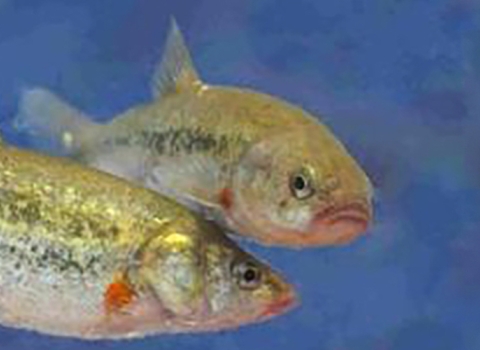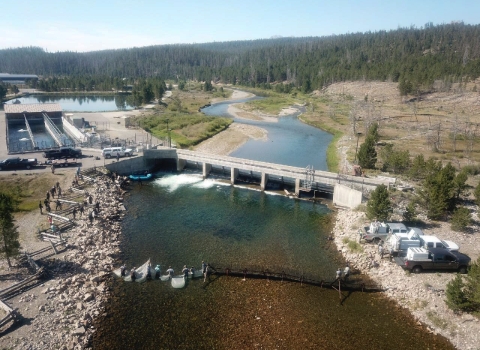In the effort to save the Poweshiek skipperling from extinction, every single butterfly counts, every caterpillar is crucial, each tiny egg is prized. We at the U.S. Fish and Wildlife Service and our Poweshiek skipperling recovery partners use a wide variety of techniques to keep this once common prairie butterfly from disappearing from the landscape. We describe the blueprint to save the Poweshiek in a final recovery plan now available.
Recovery planning is one step in a process to address threats to endangered and threatened species. Plans provide a road map for private, tribal, federal and state cooperation in conserving listed species and their ecosystems. While a recovery plan provides guidance on how best to help listed species achieve recovery, it is not a regulatory document. Once a recovery plan is finalized, recovery partners outline specific actions in an implementation strategy.
The final recovery plan for the Poweshiek skippering focuses on preventing further loss of skipperling populations by conserving habitat, augmenting populations with programs like raising skipperlings in zoos, and working to reduce threats.
“The Poweshiek skipperling was once abundant and widespread in the Midwest but is now largely gone,” said Tamara Smith, wildlife biologist for the U.S. Fish and Wildlife Service. “An international partnership is working together to save the Poweshiek by restoring key habitats and augmenting populations.”
Poweshiek skipperlings are small butterflies once found in remnants of native prairie in Iowa, Minnesota, North Dakota, South Dakota, and Wisconsin and in fens in Michigan. However, over the past 10 to 20 years, the Poweshiek has disappeared from the Dakotas, Minnesota and Iowa – an area that, until recently, contained the vast majority of the surviving populations.
During surveys since 2014, the species could be found only at a few sites in a single Michigan county, in very limited numbers at one site in Wisconsin, and in one prairie complex in Manitoba. The Poweshiek skipperling was listed as endangered in 2014 under the Endangered Species Act.
Threats to the Poweshiek skipperling include habitat loss and degradation and pesticide use. Impacts from climate change climate change
Climate change includes both global warming driven by human-induced emissions of greenhouse gases and the resulting large-scale shifts in weather patterns. Though there have been previous periods of climatic change, since the mid-20th century humans have had an unprecedented impact on Earth's climate system and caused change on a global scale.
Learn more about climate change , pathogens, and small population genetics are also believed to affect Poweshiek populations
This marks the sixth year of raising Poweshiek skipperling in zoos to augment populations in the wild. The process includes temporary collection of wild females to obtain eggs in spring and summer. Eggs are taken to zoos, including the Minnesota Zoo and Assiniboine Park Zoo in Manitoba, where they are raised over the winter. Adults are then released the following summer back at the original site. The two zoos successfully overwintered about 100 larvae in 2021, which were used to establish the first zoo-based breeding program for the species. Last year, the John Ball Zoo in Grand Rapids, Michigan, and the Haddad Lab at Michigan State University joined the effort to rear Poweshiek skipperlings, focusing on breeding.
Between the eggs obtained from wild caught females and bred pairs, the zoos successfully reared more than 500 larvae this year. While some of the butterflies will be retained at the zoos to continue the breeding program, most of those animals will be released as adults at their natal sites this July. Poweshiek skipperlings in these programs are helping partners establish zoo-based populations to help preserve genetic diversity and increase the number of individuals for releases this summer and beyond.
Learn more about the final Poweshiek skipperling recovery plan.


